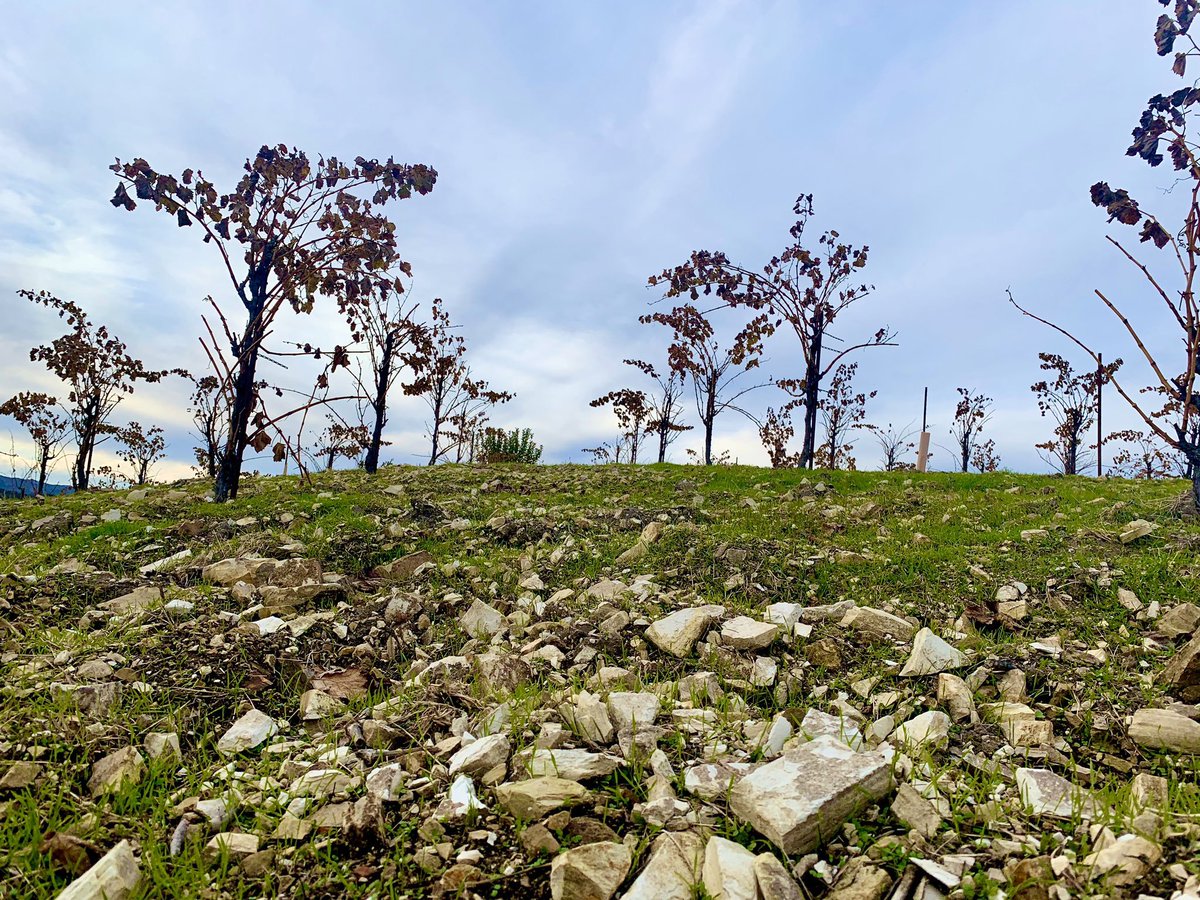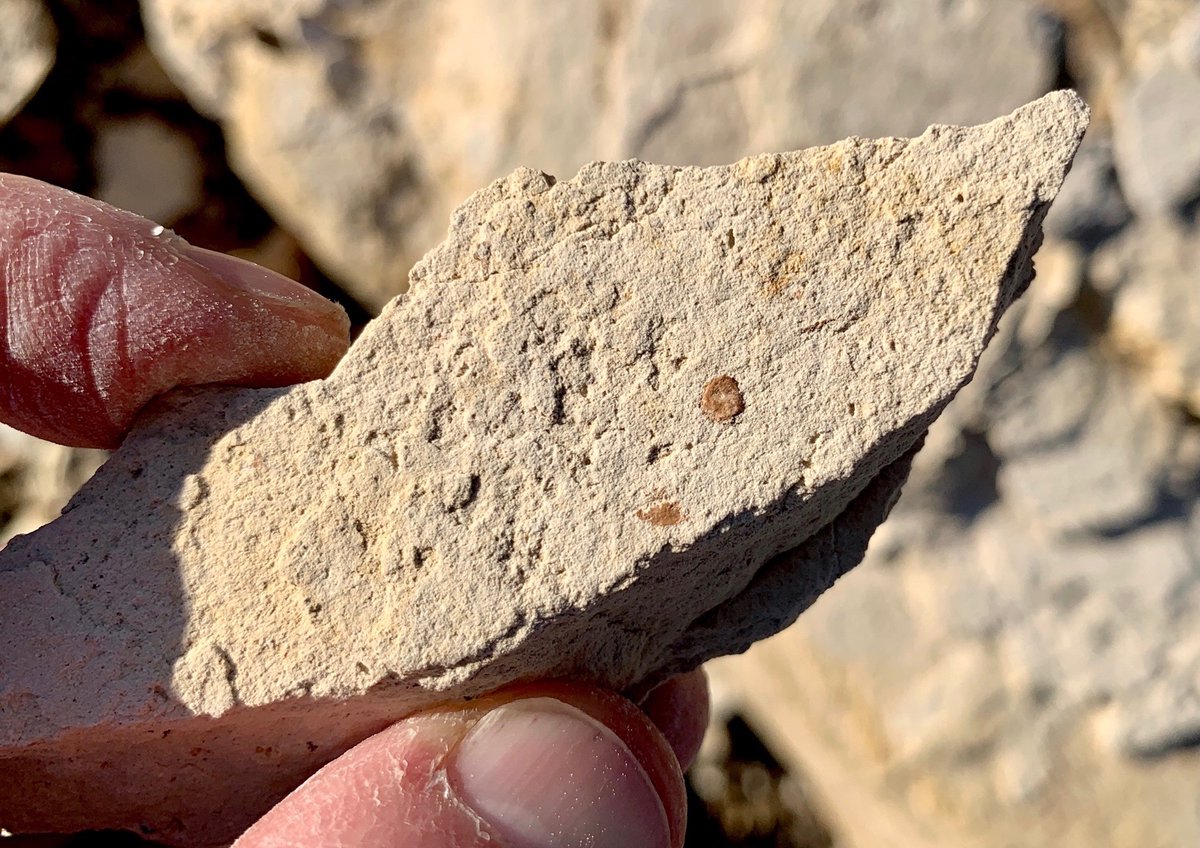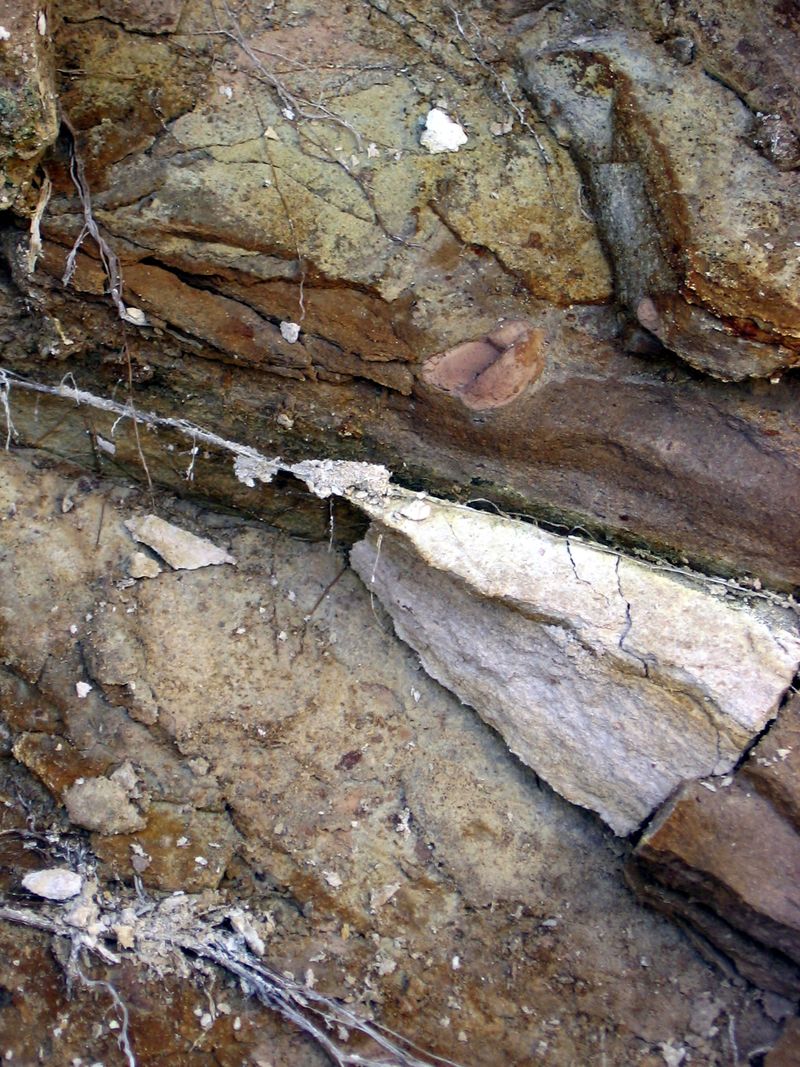What do regions like Champagne, Burgundy, Chablis, Tuscany, Alsace, the Loire, Saint-Emilion in Bordeaux, Chateauneuf-du-Pape, and Paso Robles all have in common? They& #39;ve all got #calcareous soils. In this week& #39;s #PracticalWineAdvice thread, I unpack why they& #39;re so prized. 1/
Whether called chalk, or limestone, or calcareous, in chemical terms, these soils are all high in calcium carbonate, the building block of marine life. These rocks are chalky and white, with marine fossils from oyster shells to whale bones to these fish scales at @TablasCreek. 2/
There are four major benefits to these calcareous soils. First, water retention & drainage. Water is essential for cation exchange -- the process by which plants take up nutrients through their roots. But grapevines do poorly in waterlogged soils, which spur root diseases. 3/
Calcareous soils like ours are porous, absorbing our winter and spring rainfall and holding it for the vines to access during the growing season. But we almost never see water pooling in low areas. Extra water drains down, replenishing aquifers instead of causing erosion. 4/
The second major benefit is higher acids at harvest. The key nutrient here is potassium, which grapevines use to break down acids during ripening. High calcium levels displace potassium in the soils, inhibiting this process and leaving more acidity at any given sugar level. 5/
Some direct evidence: at the symposium on Roussanne that we conducted last decade, producers from non-calcareous regions reported harvesting Roussanne roughly half a pH point higher than those of us from calcareous regions. Now we know why, chemically. https://tablascreek.typepad.com/tablas/2008/09/a-symposium-on.html">https://tablascreek.typepad.com/tablas/20... 6/
Third, the physical characteristics of these soils promote deep root development. Grapevines& #39; roots can penetrate dozens of feet in their search for water and nutrients and continue to grow throughout the vines& #39; lives. Calcareous soils expand when wet and shrink as they dry. 7/
This expansion and contraction creates fissures through which roots penetrate to where more residual moisture can be found a process that repeats each year, opening up new terrain for the vines& #39; roots to access. This has benefits for dry farming and for expression of terroir. 8/
The fourth benefit is disease resistance. Calcium is essential for the creation of strong cell walls. If soil calcium is scarce, plants prioritize intracellular calcium over berry skin calcium and berries become more susceptible to enzyme attack and fungal diseases. 9/
Calcareous soils are rare in California, only found in the Central Coast, and not everywhere even there. But it was a huge piece of our decision to found @TablasCreek in Paso Robles. For the longer story, and links to resources, see this blog. https://tablascreek.typepad.com/tablas/2020/06/why-calcareous-soils-matter-for-vineyards-and-wine-grapes.html">https://tablascreek.typepad.com/tablas/20... 10 & END/

 Read on Twitter
Read on Twitter




